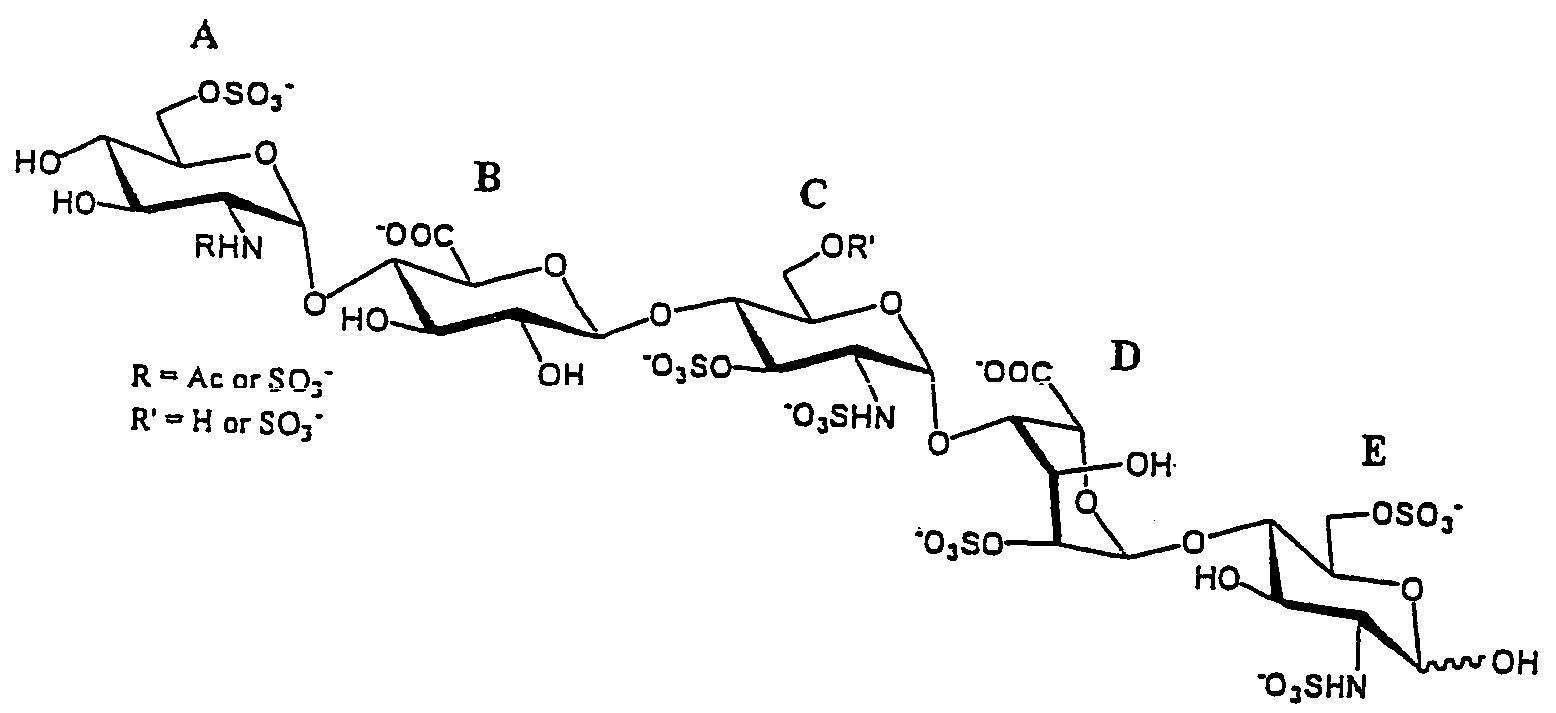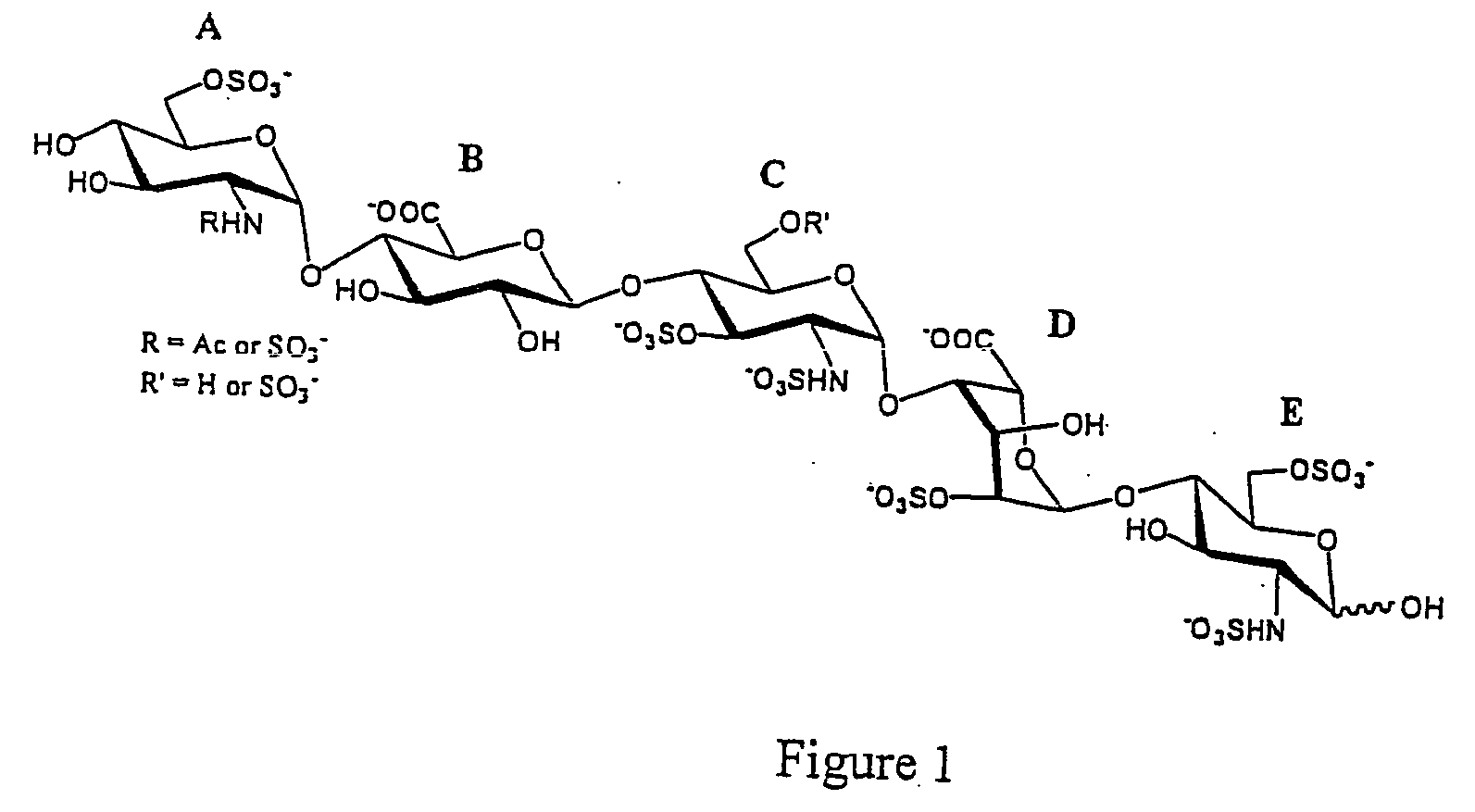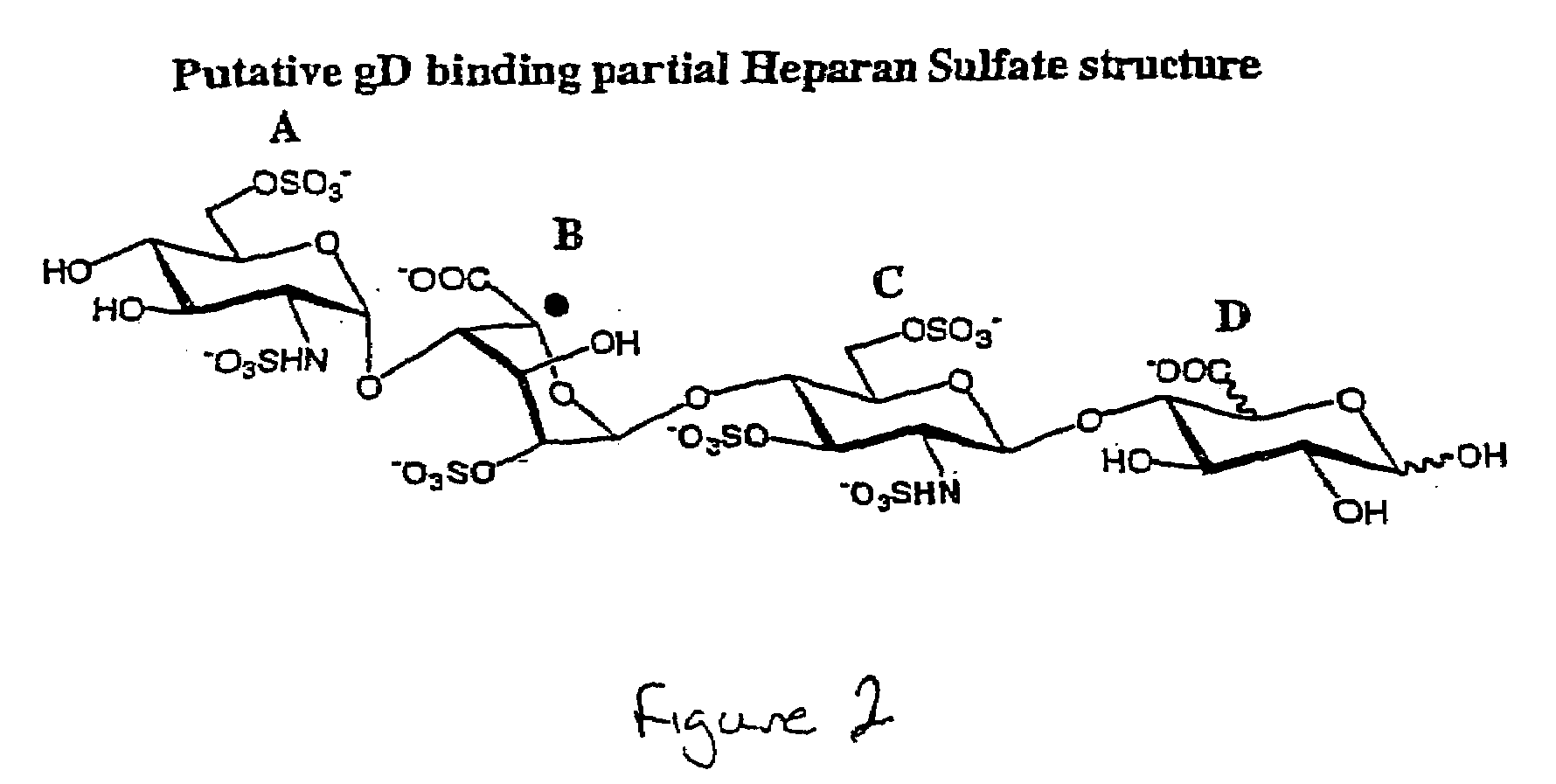Methods for synthesizing polysaccharides
a polysaccharide and enzymatic technology, applied in the field of compositions and methods for synthesizing polysaccharides enzymatically, can solve the problems of heparan sulfate, numerous steps, and patient at risk of infection by animal-born pathogens
- Summary
- Abstract
- Description
- Claims
- Application Information
AI Technical Summary
Benefits of technology
Problems solved by technology
Method used
Image
Examples
example 1
Materials
[0097]Heparan sulfate K5 precursor polysaccharide was prepared from E. coli K5 strain (Example 2). A human C5 epimerase cDNA clone was isolated from a human fetal brain cDNA library (Example 3), and expressed in baculovirus (Example 4). Heparan sulfate sulfotransferases, 2-OST1, 3-OST1, 3-OST3a, 6-OST, and C-5 epimerase were all cloned and expressed in a baculovirus system and purified as described in Liu et al. (1999) J. Biol. Chem. 274:5185-92. [35S] PAPS and [34S] PAPS were prepared as reported previously (Wu et al. (2002) FASEB J. 16:539-45) whereas [32S] PAPS was purchased from Calbiochem. Heparitinase I (EC 4.2.2.8), heparitinase II, and heparinase (EC 4.2.2.7) were obtained from Seikagagu America, Falmouth, Mass. Factor Xa was obtained from Haematologic Technologies, Essex Junction, Vt. Antithrombin III was obtained from GlycoMed, San Diego, Calif. All chemicals were purchased from Sigma unless otherwise indicated. Δ4,5Glycuronidase (no EC number) was from Seikagagu ...
example 2
Preparation of Heparan Sulfate K5 Precursor Polysaccharide from E. coli K5 Strain
[0098]Heparan sulfate K5 precursor polysaccharide was prepared from E. coli K5 strain as described in Vann et al. (1981) Eur. J. Biochem. 116:359-64. Briefly, the acidic capsular polysaccharide and bacterial cells were precipitated from liquid cultures by the addition of an equal volume of 0.2% hexadecyltrimethylammonium bromide (Cetavlon). The polysaccharide was extracted from the precipitate with 1 M calcium chloride. The polysaccharide was purified by three cycles of precipitation with ethanol (80%) followed by extraction with phenol, buffered with sodium acetate to pH 6.5. The final aqueous phase was ultracentrifuged for 2 hours at 105,000× g and the supernatant was freeze-dried. All operations were carried out at 4° C. Mass spectroscopy analysis of smaller fragments was in accordance with the calculated molecular weight and thus confirms the identity of heparan sulfate precursor polysaccharide stru...
example 2a
Production of K5 Polysaccharide
[0099]In a preferred method, heparan sulfate K5 precursor polysaccharide was also prepared as follows. E. coli K5 bacterial cells were grown overnight in 1 L of growth medium containing following ingredients: casaminoacids (20 g), yeast extract (10 g), NaH2PO4 (4.8 g), KH2PO4 (4.2 g), K2HPO4 (5.3 g), MgCl2 (0.5 g), glucose (2 g). FeSO4 (20 mg). The pH of the bacterial culture was adjusted to 6.0 with acetic acid, solid protease (200 mg / L) was added and kept at 37° C. for 24 hours. Insoluble material was removed by centrifugation at 3000 rpm. The supernatant was diluted with an equal volume of double distilled water and applied to a DEAE-Sephacel column (50 ml) that was previously equilibrated with washing buffer (0.2 M NaCl in 20 mM sodium acetate, pH 6). The column was washed with 20 bed volumes of washing buffer and the K5 polysaccharide was eluted with 0.5 M NaCl in 20 mM sodium acetate containing 0.01% TRX-100 (pH 6). The eluate was adjusted to 1M ...
PUM
 Login to View More
Login to View More Abstract
Description
Claims
Application Information
 Login to View More
Login to View More - R&D
- Intellectual Property
- Life Sciences
- Materials
- Tech Scout
- Unparalleled Data Quality
- Higher Quality Content
- 60% Fewer Hallucinations
Browse by: Latest US Patents, China's latest patents, Technical Efficacy Thesaurus, Application Domain, Technology Topic, Popular Technical Reports.
© 2025 PatSnap. All rights reserved.Legal|Privacy policy|Modern Slavery Act Transparency Statement|Sitemap|About US| Contact US: help@patsnap.com



